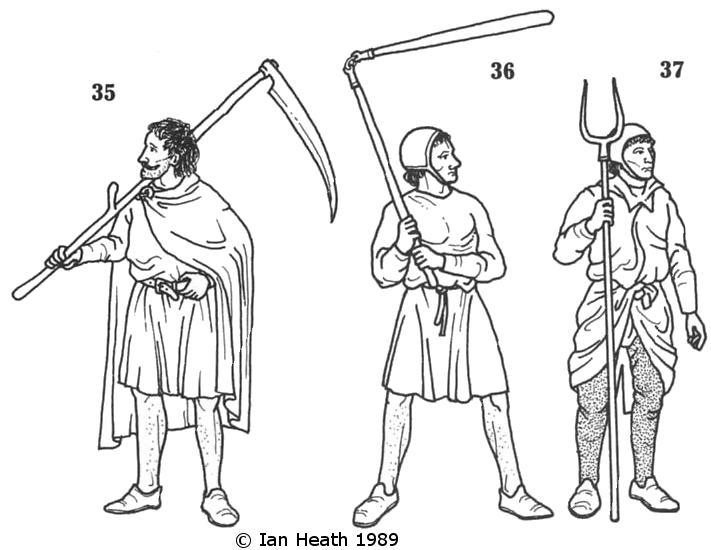
Register a SNAP EBT card with Amazon
ARMED PEASANTS, 12th-13th CENTURIES
An extract from Armies of Feudal Europe 1066-1300by Ian Heath
 | ||
|
c.f. Peasants in The Chronicle of John of Worcester, England, 1131-1141 |
c.f. A peasant threshing in Historia Anglorum by Matthew Paris |
c.f. A soldier with pitchfork in the Maciejowski Bible |
35, 36 & 37. ARMED PEASANTS, 12th-13th CENTURIES
